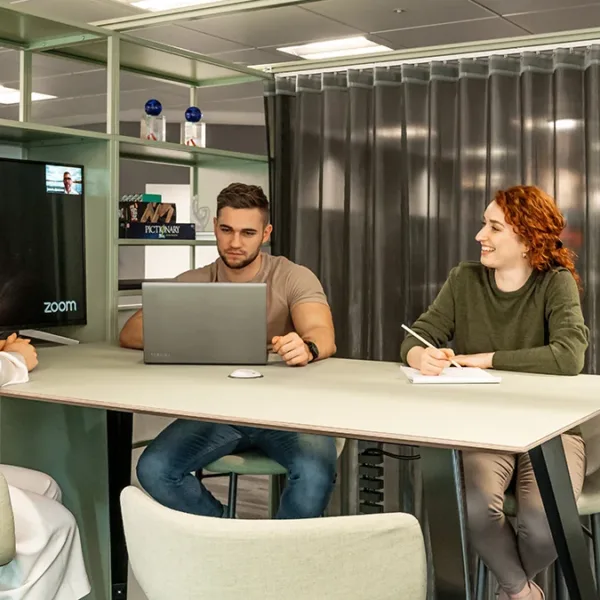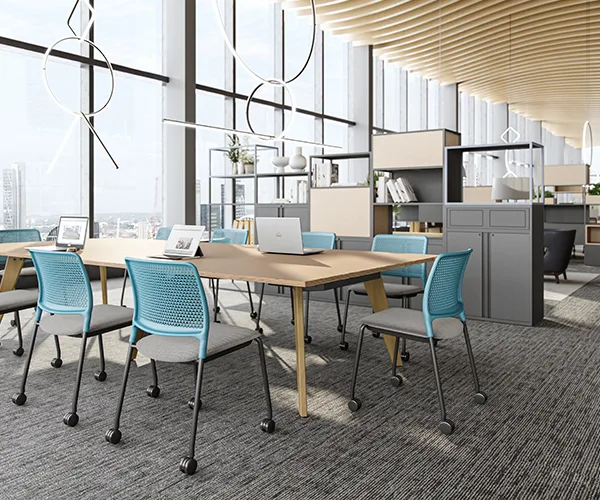How Often Should You Replace Office Chairs?
You’re not the only one who works hard on a daily basis. Your office chair does too, providing important support, comfort and functionality throughout your working day. It’s a hard-working, and very important, piece of furniture. But it won’t be able to provide the same level of support, comfort and functionality forever.
How do you know when your office chair needs replacing?
There may be obvious signs of wear and tear or a reduction in functionality. Given an office chair’s important role in supporting your lower back and promoting good posture, it’s important to ensure it’s still doing its job well. When the chair’s worn out, it can negatively affect your wellbeing.
Do office chairs have a lifespan?
The lifespan of an office chair does vary, but the average is around seven years. Even a luxury, high-quality chair will run its course. With regular maintenance, a good office chair may last for ten years. But chairs used by people who sit for long periods of time are likely to wear out more quickly.
Leather office chairs: these executive chairs are the most durable and are built to last. They’re likely to last for ten years. The leather itself will start to look worn – it gets thinner and cracks. Using oils and creams on the leather will help to maintain it and keep it looking good for longer. The upholstery can be repaired though, as long as the base and castors are still in good working order.
Mesh office chairs: the material on a mesh chair is vulnerable to snags and tears over time. The padding in the seat cushion will also deteriorate after several years which makes the office chair less comfortable and supportive.
Fabric office chairs: the quality of the fabric will determine the longevity of these popular desk chairs. Fabric probably won’t last as long as leather. The most common issues with fabric chairs are tears and flattened padding. Neither of these issues look good, but flattened padding will also affect your comfort, posture and back support.
Plastic office chairs: made with durability in mind, plastic office chairs tend to have a longer lifespan. However, that depends on the quality of the product. On average, plastic chairs will last ten to fifteen years if well maintained and looked after. The levers and castors can break, and the seat padding will deteriorate.
How do I know if I need a new office chair?
Look out for the tell-tale signs that your office chair needs replacing.
Signs of wear
There are various aspects to look out for. The castors and wheels may stick or even come loose. They may not glide across the floor as well as they did before. The mesh or fabric may tear or look worn. The seat padding may start to sag and reduce in height.
Feeling pain
An important role of the office chair – in particular an ergonomic office chair – is its ability to provide support. If you find that you’re feeling more back pain and bodily aches after your working day (or indeed during it), it could be a sign that your office chair needs replacing.
Reduction in comfort
Maybe the chair just doesn’t feel as good as it used to. A broken wheel will make the chair feel off kilter. Worn and sagging seat padding is less comfy and provides less support than it will have done originally.
Needs constant adjustment
There’s likely to be an issue if you find yourself constantly fiddling with the levers to adjust the armrest, backrest, chair height or lumbar support. It’s a sign that something isn’t right. That the chair isn’t as comfortable as it was once. And that you’re not getting the right back support.
Looks old fashioned
It could be style rather than functionality that gets old. If you’ve updated your work environment with new look work stations and meeting rooms, then old fashioned office chairs will look out of place. The same applies if you redecorate your home office space. It could be time to update your desk chair too.
Out of warranty
A warranty can give an indication of the furniture’s likely lifespan. You can still use the chairs when they’re out of warranty, but you may notice more signs of wear and tear.
Change of office desk
Many people are choosing a standing desk over a seated one to avoid sitting for long periods of the working day. A new work station could require a different style of office chair. For example, a standing desk chair over a standard task chair. This will ensure you have the best set up to aid good posture while you work.
Care tips for office chairs
You can prolong the life of your quality office chair, optimise its performance and keep it looking good for longer. Regular maintenance and care will make a difference to your office chair’s longevity, no matter whether it’s a fabric chair, mesh chair, plastic chair or leather chair.
Cleaning – remove the grime that builds up around your workspace over a working day. Vacuum it frequently and wipe it down after use.
Wheel checks – dust and hair can get entwined around wheels and castors which can affect functionality. Blast it with a vacuum cleaner to clean them out.
Lubricating – spray the wheels, base and levers with a silicone lubricant to keep the moving parts turning smoothly and efficiently.
Creams – apply leather cream or oil to keep your executive chair looking new for longer.
Discover KI Europe’s office chair solutions for today’s organisations
KI Europe’s award-winning furniture sets benchmarks for the industry. Our in-house design, engineering and production experts work with designers to create furniture that’s elegant, practical and durable.
Our office seating is remarkable for its style, comfort and support. Importantly, it caters to individual seating preferences. Explore our office chair solutions and more seating options.
Our customers are central to our design approach. If you’d like to enquire about our products, please contact us via our website,



